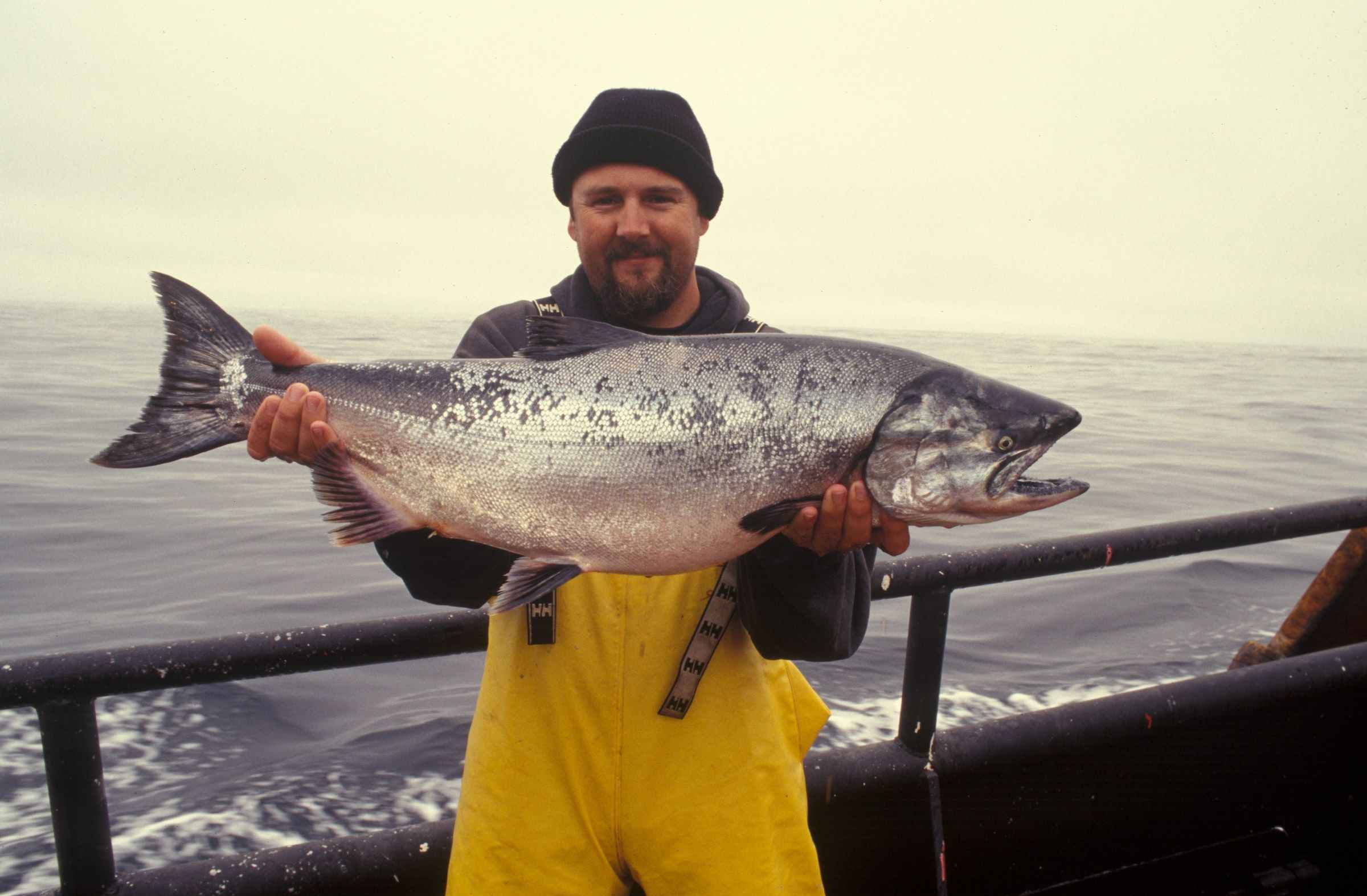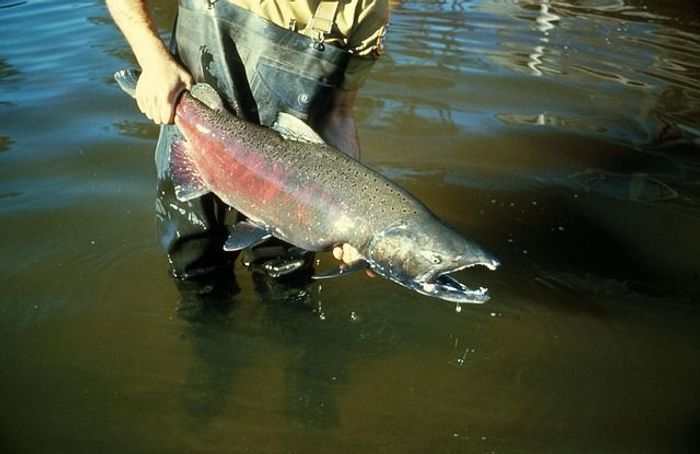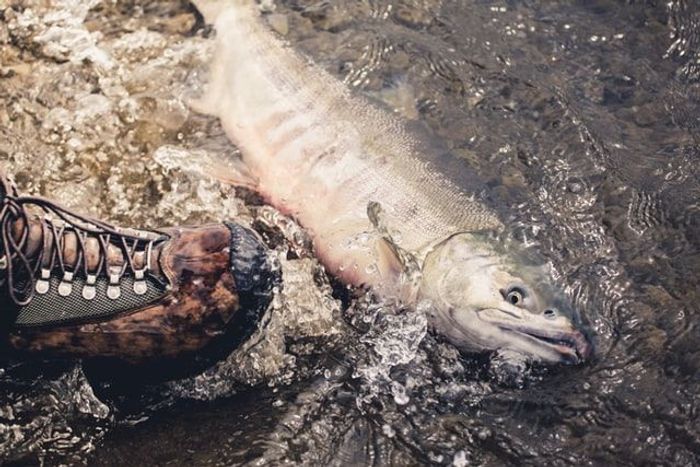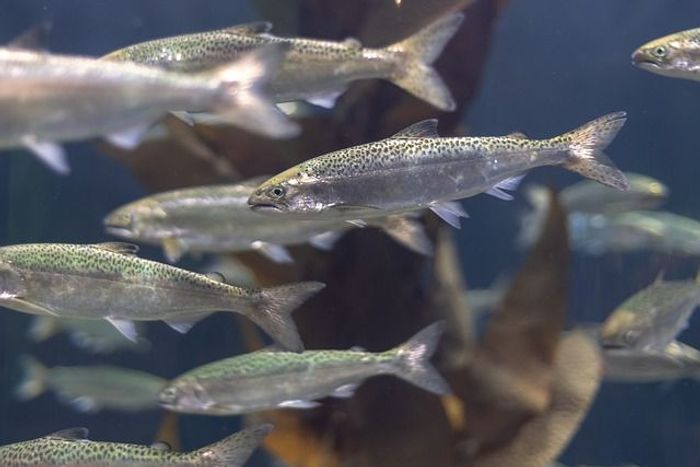Guide to Types of Salmon Fish in North America
Learn about the different types of salmon fish that you can find in North America.

When you mention salmon, the first thing that comes to mind is its delightful flavor and its infamous migration run. Its infamous migration run occurs because of its short lifespan. Salmon have a lifespan of an average of around 2 years. During those 2 years, they head out into the open waters before returning to the river and stream where they spawned to spawn. Then, they die right after. Talk about escalating things quickly.
Salmon undergo a drastic physical change during spawning called smoltification. This fish will change color, structure, and shape, which helps differentiate the species from each other. Salmon is considered vital to the ecosystem because of the healthy nutrients they possess, which are transferred to animals or humans through consumption or when it is carried into estuaries after the salmon perish.
Salmon, currently, has a total of 6 other species under its umbrella. Each of these six species has a unique trait to them that makes anglers go after them. The Atlantic salmon is one of the most highly farmed species because of how easy it is to culture them. Chinook Salmon, known as the King of all Salmon, is one of the signature fish of San Francisco and they are known to put up a good fight. To each, their own but anglers will always find a reason to enjoy fishing out Salmon. Here's a list of the Salmon that anglers just love fishing for:

Atlantic Salmon (Salmo salar)

The Atlantic salmon is unique because it’s the only salmon with a native range in the northern Atlantic Ocean and in the rivers that merge there, and is the only salmon that survives spawning. It can grow almost equal in size to a king salmon. It has black spots on the upper half of its body and gill covers, but its caudal fin will usually remain unspotted. When juveniles, Atlantic salmon have blue-red spots that become darker as it matures and transitions into a silver-blue color. During spawning, males will become a golden-bronze shade with green-red spots and shades of pink.
Atlantic salmon is rich in B12 and is the most widely consumed species in North America, which affected its populations in the wild. Today, it's a conserved species in some countries, has been introduced to other areas, and is farmed using aquaculture techniques.
Chinook Salmon (Oncorhynchus tshawytscha)

The Chinook salmon or king salmon is the largest Pacific salmon. It can grow up to five feet and weigh over a hundred pounds. It is known for storing an excess of fat for its long migrations which gives this fish its famous smooth, buttery flavor. It has high levels of omega-3 fatty acids and is the highest-priced commercially.
The Chinook is nicknamed the “blackmouth” because the interior of its entire mouth is black. It’s speckled with tiny circular spots running across its back and entire tail. When spawning, both its head and snout grow in length, and its entire body changes color from an olive-brown to a dark rose-like color.

Chinooks are mostly farmed for consumption with a native distribution in the North Pacific Ocean and rivers of western North America. It’s one of the species introduced to the Great Lakes and is a popular game fish for anglers.
Coho Salmon (Oncorhynchus kisutch)

Coho salmon is not particularly sought after due to its mild flavor but is a favorite of anglers among salmon since it’s the toughest to catch. On average they reach about 28 inches in length and weigh 11 pounds but can easily reach 36 pounds. It’s most widely available in autumn along the coast of the North Pacific, most commonly in Washington state and all the Great Lakes. They have black mouths with white gums and spots on only the top half of their caudal fin.
The Coho undergoes several physical transformations, unlike the Chinook. It has silver sides and a dark back when in the ocean but smoltifies into bright red with a blue-green back and a dark belly in freshwater. During spawning, it will develop a kype or a pronounced hooked nose and mouth Their sides become a light rose-pink hue and the backs of males will slightly curve.
.
Sockeye Salmon (Oncorhynchus nerka)

The sockeye salmon is renowned by chefs and salmon enthusiasts for its rich texture, darker color, and more pronounced salmon flavor. It grows to almost three feet long, can weigh anywhere between 5-15 pounds, and has large, gold-colored eyes. It’s normally a blue-silver color in open water, has serrated gill rakers, and does not have spots on their backs or tails.
It’s also called the red salmon, because it will smoltify into a bright red during the spawning season, except for its head and fins which are green. Both sexes will develop a kype, but only the males will develop a pronounced hump on their back and increase their body length.
The sockeye can be found along the west coast of the United States, from Washington State to Alaska, and all of the United States Great Lakes except for Lake Superior. Landlocked sockeye is called kokanee, and is much smaller than those that migrate.
Pink Salmon (Oncorhynchus gorbuscha)

Pink salmon is the smallest of its cousins, only growing to about 18 - 30 inches in length. It’s the most plentiful and considered good table fare for its delicate flavor and pale flesh, which has been compared to the sole. They only spawn every other year in a specific area, alternating between waters in Alaska and the Great Lakes. They have a white mouth like other species but have black gums.
This salmon is somewhat reversed with its color change. It’s normally silver with a light shade of pink, dark splotches on its back, and spots on both halves of the tail. During spawning, it resembles a shark’s colors with a grey upper half and a white underside. The pink salmon will develop a pronounced hump on its back, which is why it’s known as the humpback salmon or humpie.
Chum Salmon (Oncorhynchus keta)
Chum salmon is prized for the flavor of its large orange eggs, which are used in sushi. Its flesh is low in fat and not particularly sought out by commercial fisheries or anglers. It’s widely distributed in its native range in the northwest United States, running along Canada’s Pacific coast until Alaska, and was not introduced to the Great Lakes.
The chum salmon is normally a silver blue-green color with undefined dark splotches, no spots, a white underside, and a white mouth. When in freshwater for spawning, it develops vivid purple-red bands of color and its body becomes a dark olive-green. It will grow a kype, albeit less conspicuous than its cousins, but what makes the chum salmon unique is its large teeth, earning it the nickname the “dog salmon”.
Salmon are Special
Out of the thousands of fish that swim in the earth’s waters, only one percent migrate between saltwater and freshwater. The millions of salmon that make their annual run are not only an awe-inspiring feat but a vital part of various ecosystems. Their migration as a keystone species brings nutrients to the waters they inhabit, travel, and eventually perish in. A decline in the salmon population or their sudden absence will significantly impact the plants and animals that directly or indirectly benefit from them. Learning about salmon and understanding their roles in an ecosystem is important because it helps us to appreciate this unique fish, and ensure that their populations remain plentiful in the future.




